The only pet finch you have any chance of properly hand-taming is the Canary. You may persuade a thoroughly settled-in Zebra finch to use your finger as a perch, but that’s as far as you’ll get. Even with a Canary the process can be touch and go (unlike with budgies, for example, who soon start enjoying the human interaction). To give yourself a fighting chance, follow the tips below.
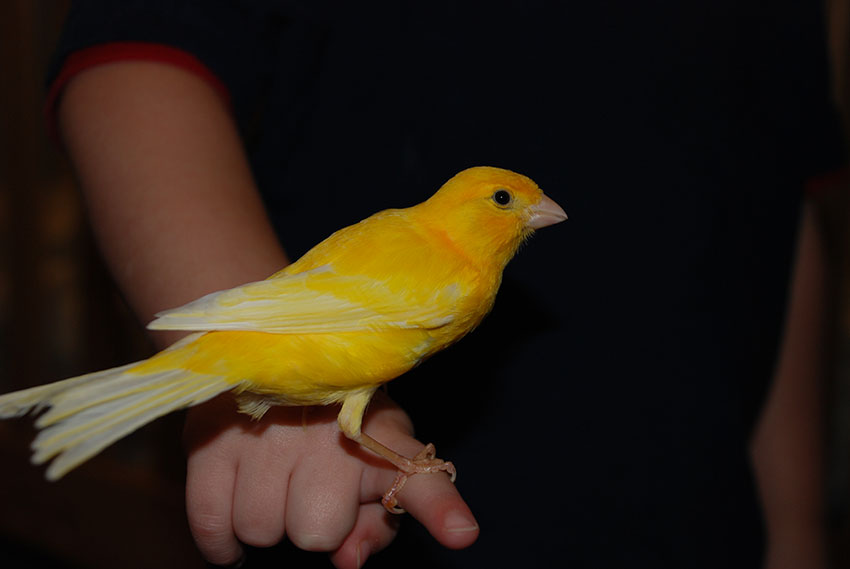
Canaries enjoy interaction with humans
- Let your Canary settle in. He will need to be completely relaxed in his surroundings before you have any chance of hand-taming him. It will only work if you have a single bird (of either sex) in the cage. Sudden movements and loud noises are not going to impress the bird, and if there are hyperactive children or dogs (or cats of any kind, hyperactive or otherwise) using the room, you won’t get very far with the training. The cage will also need to be at eye-level, as Canaries don’t like to sense things looming over them.
- Let him get used to you. The first thing to do once the bird is settled in is to sit near him and make soft, reassuring noises. Adopt your own signature noise, by which the Canary will come to recognise you. This could be a special whistle, or a soft, descending “Hell-o!” Whatever suits you, as long as it’s gentle and distinctive.
- Let the Canary dictate the best training times. If he is feeding or fluttering around the cage, he won’t be open to interaction. Wait until he’s settled on a perch. Also, avoid staring at him, as birds are programmed to spot direct eye contact in other species, equating it with danger.
- Keep the early sessions short. Two daily sessions of 10 to 15 minutes is all you’ll be able to manage. Anything longer will cause the bird stress (and stress can kill birds with alarming speed). These short bursts will get the Canary used to your close presence and voice. Talk to him quietly with soft words and whistles, and over the course of a few weeks he’ll come to view you as an agreeable companion.
- Once he’s happy with your presence, hold your hand up to the cage. The Canary now needs to get used to this specific part of your body. Start by holding the hand still, and over time begin to move it around, and gently rub it on the outside of the bars.
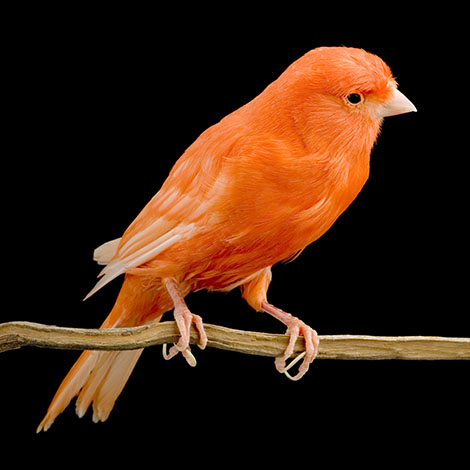
The first stage is to get the Canary used to your hand
- Once the Canary is happily ignoring your hand, offer treats inside the cage. The bird is unlikely to take the bait immediately, but he’ll be tempted if you offer something he particularly likes. It’s a good idea if this is a foodstuff you can easily grip while holding out a finger as a perch, such as a sprig of broccoli or a strip of carrot or courgette – something you know the bird particularly relishes. Once the Canary has taken a nibble, he will come to associate the hand with the treat. Never keep your hand in the cage if the bird is showing any signs of distress, such as flapping wildly or cowering in a corner. If this happens you’ll have to return to the ‘hand outside the cage’ stage.
- Wait for first contact. The Canary will eventually grip your finger with a foot as he feeds, or even hop on and use it as a perch. He might still have moments when he panics, or may bite your finger. This is not painful, but is a sign that you need to backtrack a bit, as the Canary is clearly not in the mood for interaction.
- Once the bird is relaxed and perching on your finger inside the cage, try holding him and gently taking him out. At this point he will be accepting your treats, and will often look at you, head cocked, sizing you up. Unlike a budgie, he will not allow you to take your hand out of the cage while remaining on your finger. When he first leaves the cage you‘ll need to hold him gently but firmly; and if the bird is now completely happy with your attentions, this should not cause him any stress. Note: it will take you four to six weeks of daily training to reach this point. (See Handling in the Keeping Pet Finches section of this guide).
- Once the Canary has been out of the cage several times, you can start to coax him out by offering a perch. The room will need to be sealed, and devoid of any dangers. The perch should be at least 30 cm long. Insert it through the bars next to the open cage door, at such an angle as to make it visible and accessible, using a treat as a lure, and using soothing noises all the time. You will need to have another prominent perch close by outside the cage, for the Canary to fly to once he’s made it into the open. Never pursue the Canary with either perch or hand inside the cage, as this will induce panic and make him far less likely to take the leap from safe cage to the wider world.
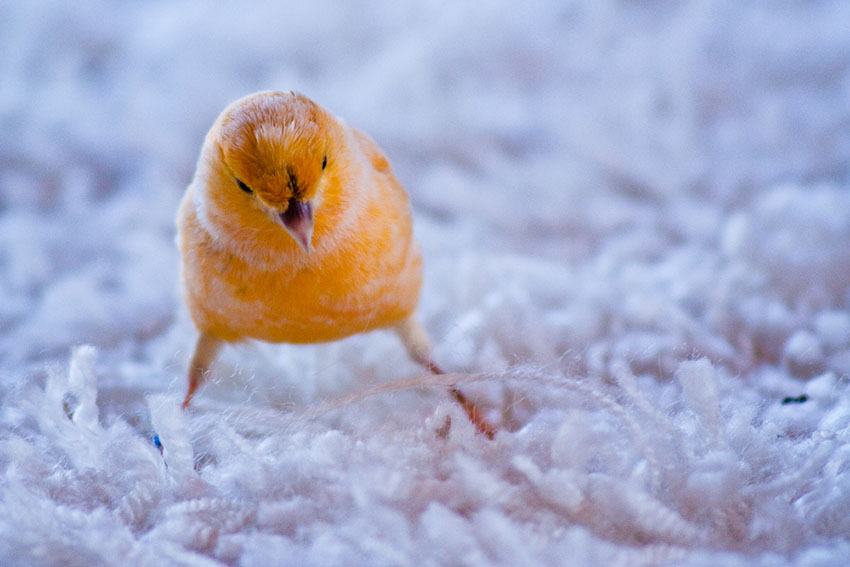
Canaries enjoy some free-flying time indoors
- When the Canary has ventured out a few times, try getting him to perch on your finger outside the cage. He will be used to your hand from all the in-cage training, and once he’s started using perches outside the cage, he will be more inclined to use your finger as one. Treats will be necessary as a lure, along with the usual soothing sounds. Hold two fingers out, horizontally, with the treat gripped between them, or between the forefinger and the thumb. Eventually you will be able to call him without the lure of the treat. He may take to landing on your head or shoulder instead, feeling safer on the highest perches.
- Wait for the Canary to return to his cage. In the early stages of free flight, your Canary will not be perching on your hand, head or shoulder, and will need to go back to the cage on his own. Never chase him back in or thrash around trying to catch or net him. Eventually he will become hungry, tired or bored, and will return. It might take him a few attempts to make the connection between the perch next to the door and the hole that admits him back into the cage, but he’ll get there. It needs patience from all concerned. Treats can help: place something prominent within eyeshot inside the cage, and he’ll soon be heading for it.
- If the bird shows no sign of returning to the cage after several hours, you’ll need to intervene. It might be bedtime, you may need to leave the house, or the small, scary children and/or pets may be due to arrive. In these circumstances, you’ll need to take gentle but drastic measures. Darken the room, and resort to a net (see Netting a Bird in the Keeping a Pet Finch - Handling section of this guide). This should only ever be a last resort.
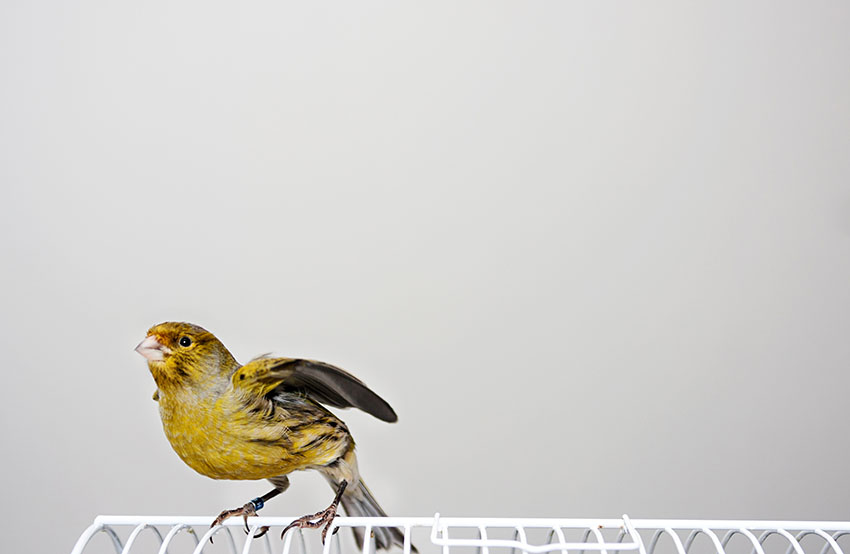
Stretching the wings is fine, as long as the Canary returns to the cage afterwards
Zebra Finch Training
The same technique as described above for taming Canaries can be applied to Zebra finches too. You will need to start with very young birds, and will have a much better chance of success if they have been hand-reared. The taming process will take a long time - you’re looking at months rather than weeks - so bear this in mind before giving up.



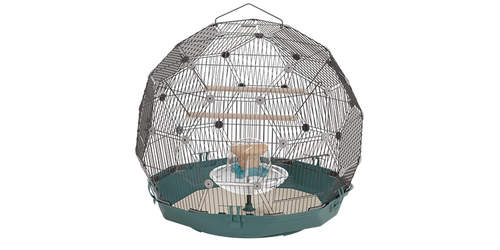
Comments
Jenna, 11 August 2019
I have two canaries that i just got and I was reading this to help me train them. But it said to only have 1 bird in a cage at a time during training. But I don't have another cage for them and I can't touch them yet either. What am I supposed to do?
Buchanan, 28 July 2019
my canaries are very skiddish when i use my bare hand. however i notice if i have a latex glove on my hand they come to it, eat from it and otherwise have no fear of it. i thought that was a strange thing.